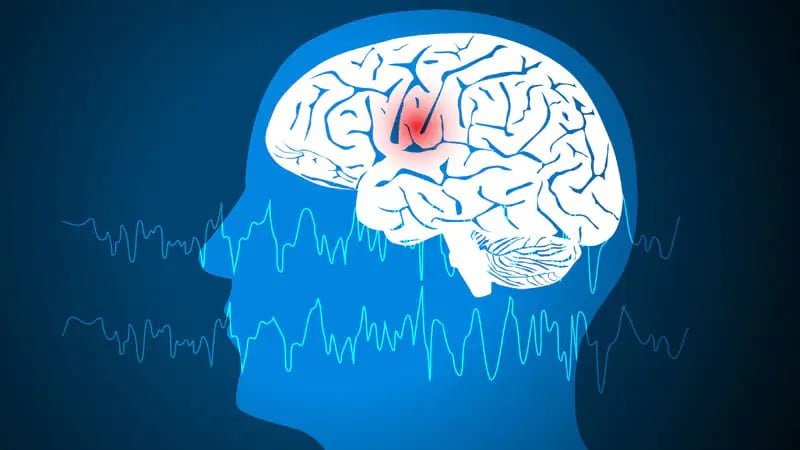The study covered in this summary was published in medRxiv.org as a preprint and has not yet been peer reviewed.
Key Takeaways
-
There is a disruption of normal excitation/inhibition balance in brains of patients with epilepsy, and this study provided evidence that there is higher excitability in nonseizure onset zones (non-SOZ) vs seizure onset zones (SOZ) in the interictal resting state.
-
Information flow was dominantly from non-SOZ toward SOZ, possibly inhibiting seizure activity.
-
These findings, combined with a random forest data model, allowed localization of SOZ with 85% accuracy, compared to conventional means of interpreting SEEG (stereotactic-electroencephalography) with seizure capture.
Why This Matters
-
A third of patients with epilepsy become resistant to pharmacologic treatments.
-
Patients with refractory epilepsy can be candidates for surgical resection and undergo SEEG to localize epileptogenic zones (EZ), a procedure that requires temporary implantation of electrodes in the cortex. Monitoring for seizures to establish location can take days to weeks.
-
The method of resting-state flow capture allows EZ to be identified without waiting for seizures to occur, which has potential to save monitoring time and costs.
Study Design
-
This study was a data analysis using random 10-minute periods from interictal-state recordings from long-term SEEG.
-
Forty-three patients with drug-resistant focal epilepsy completed presurgical SEEG between 2014 and 2019 at the University of Pittsburgh Medical Center.
-
Directional connectivity was estimated between brain areas based on directed transfer function and cross-frequency directionality. Synaptic excitation-inhibition ratios were estimated using the power-law exponent.
-
A balanced random forest machine learning technique was used to predict SOZ at the individual electrode level.
Key Results
-
Information flow was weighted toward movement from non-SOZ to SOZ during interictal resting states.
-
Excitability of non-SOZ was elevated compared to SOZ.
-
A larger information flow discrepancy predicted favorable seizure outcomes.
-
SOZ were localized with 85% accuracy, and seizure outcome was predicted with 77% accuracy.
Limitations
-
Use of the clinical SOZ to determine EZ can be limiting because the SOZ can be a subset of EZ.
-
The 10-minute data period may be limiting because studies have shown temporal variations of seizure activity over longer periods.
-
Further research is needed to explore how behavior, including sleep/wake states, influences the findings.
Disclosures
-
The authors are inventors on a US provisional patent application, which covers the analysis techniques, submitted by Carnegie Mellon University.
This is a summary of a preprint research study, “Interictal SEEG Resting-State Connectivity Localizes Seizure Onset Zone and Predicts Seizure Outcome,”by Hiateng Jiang and colleagues from Carnegie Mellon University, University of Pittsburgh and Massachusetts General Hospital on MedRxiv, provided to you by Medscape. This study has not yet been peer reviewed. The full text of the study can be found on medRxiv.org.
Source: Read Full Article
